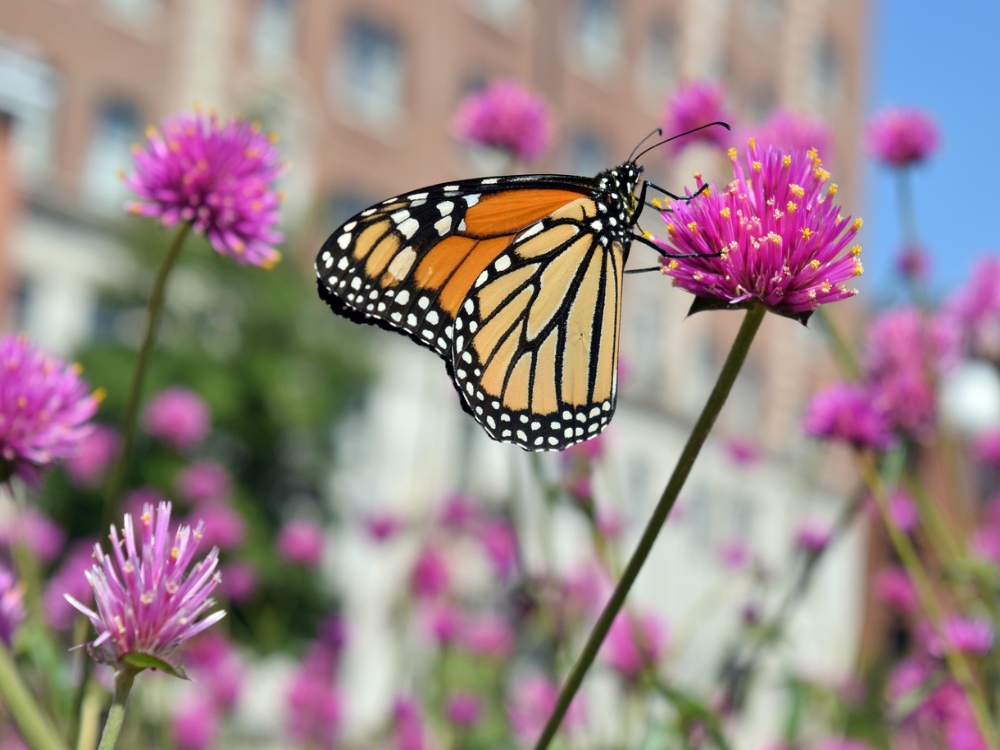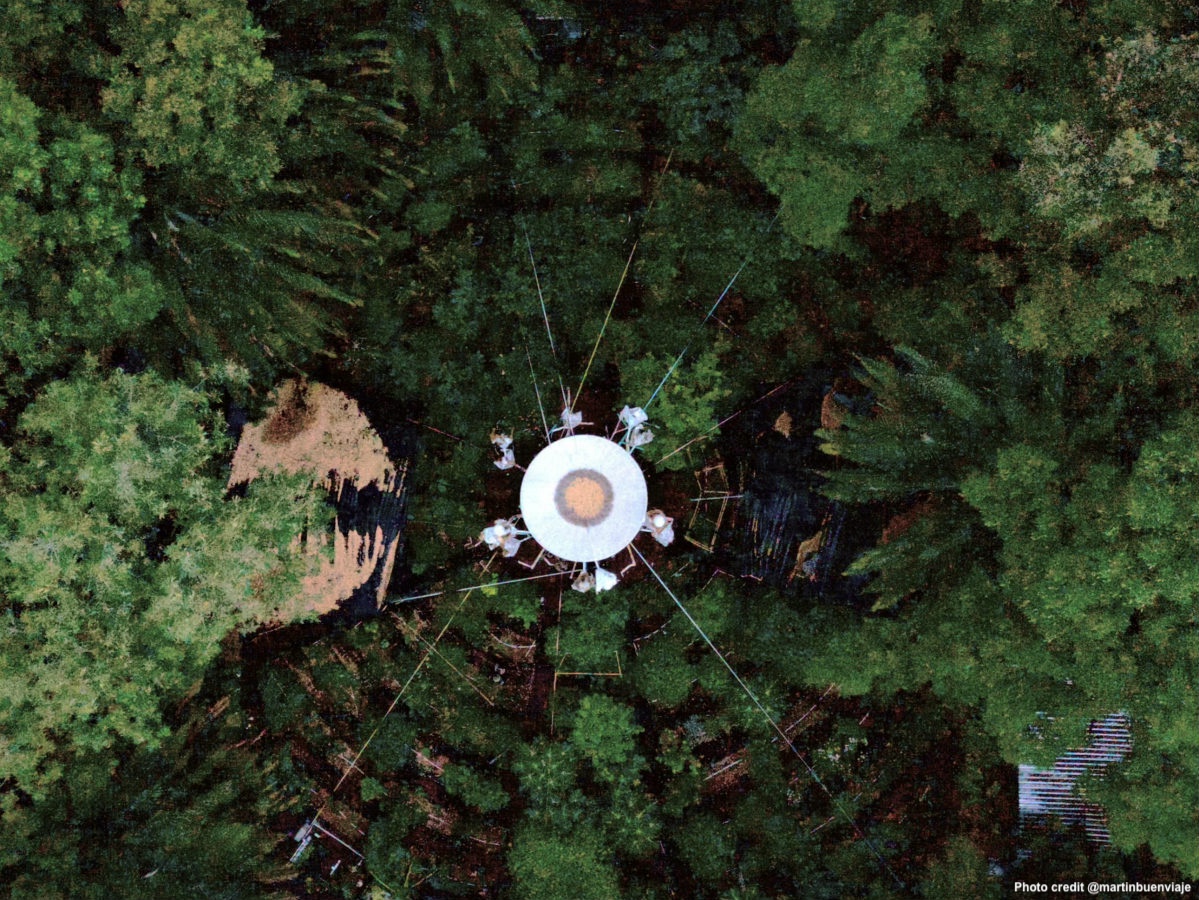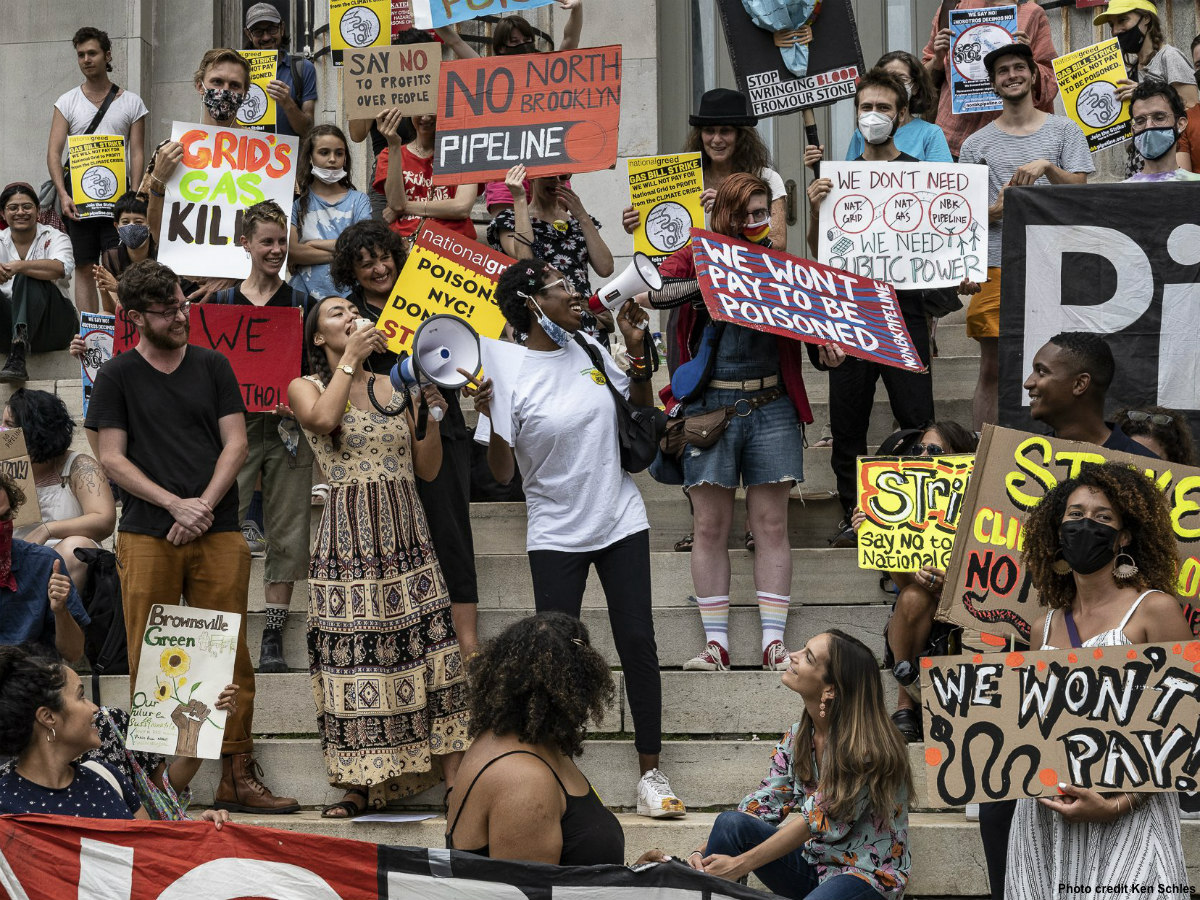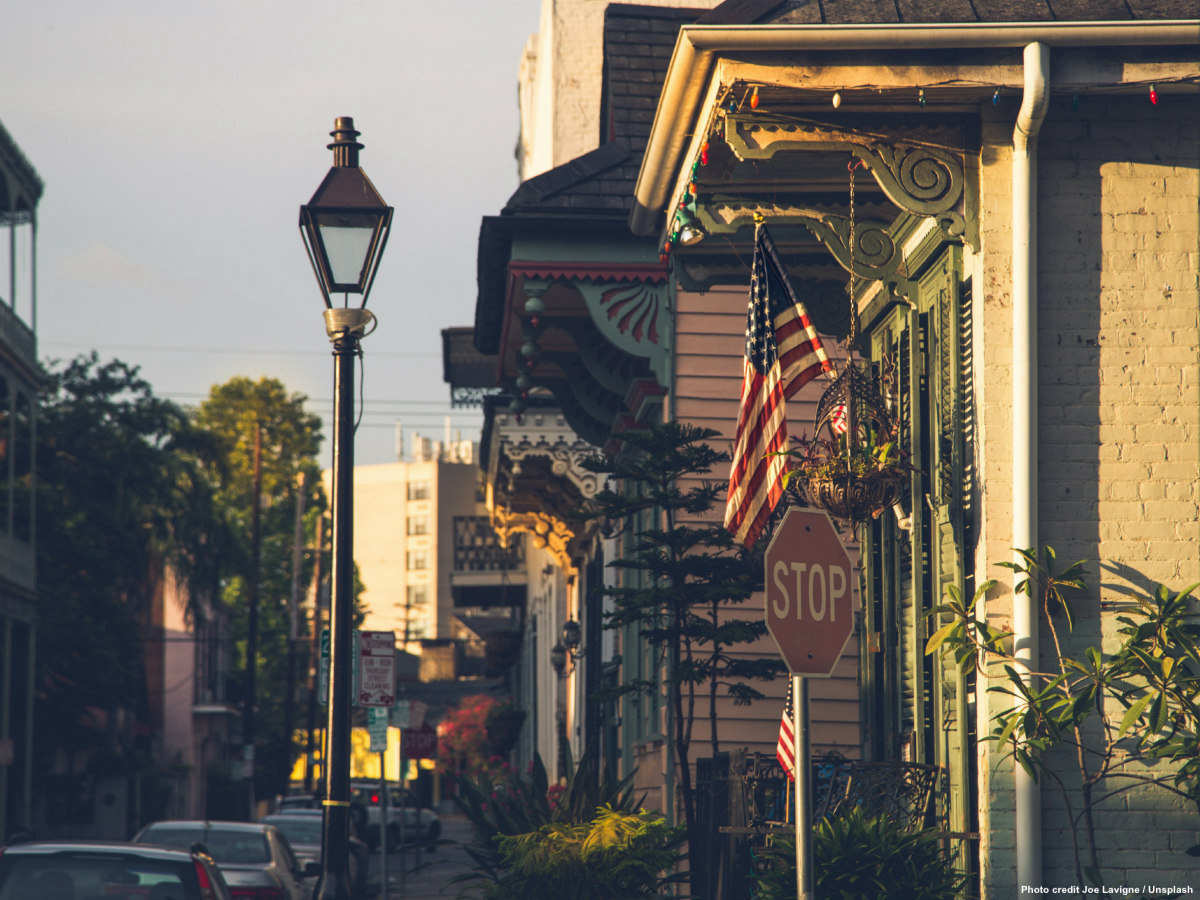At the beginning of this year tennis champion Naomi Osaka captivated the crowd at the Australian Open when a butterfly refused to leave her during a match. She took the creature to safety on the sidelines after it landed on her leg and then flew back again on her nose. Perhaps it was this non-tennis moment she needed to calm her nerves down to make it through the tournament and win the singles title. The hard courts of Melbourne Park are located between train tracks, a river and the main road, maybe also a pollination highway?
‘Cities are undervalued as pollinator habitats because there is concrete and turf everywhere. However, they also have abundant residential green spaces which can be transformed into a functional habitat for native species,’ explains Jode Roberts. He is the brainchild behind the Butterflyway Project, which started in Toronto and has now expanded to hundreds of communities with the support of the leading environmental foundation of David Suzuki, the voice of science in Canada.
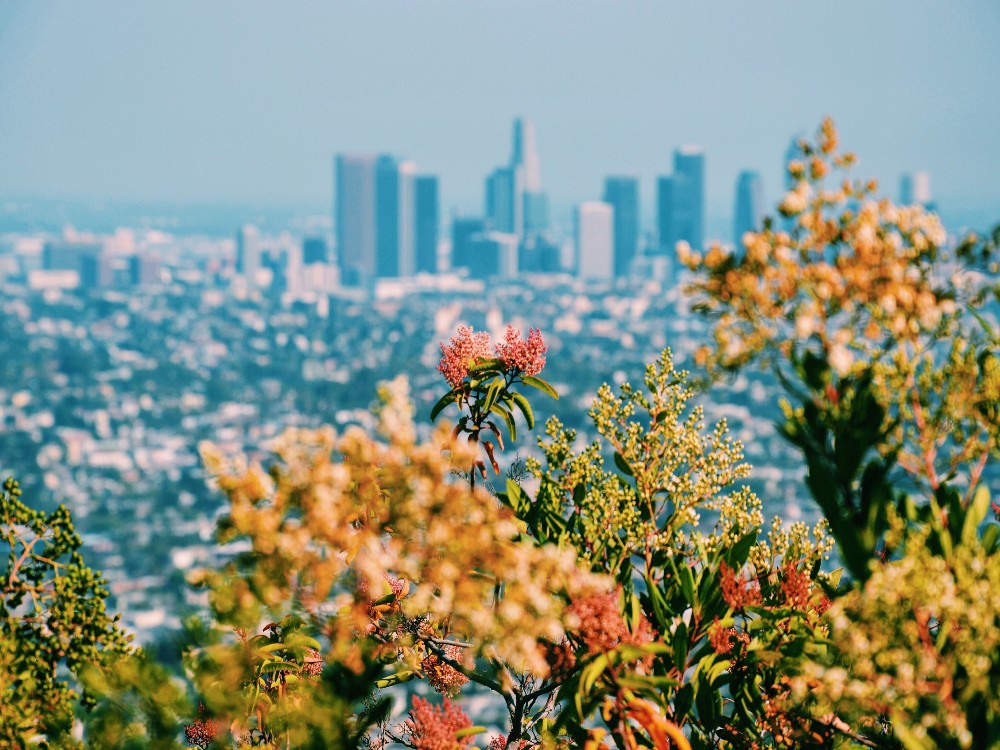
Inspired by US journalist Richard Louv, who coined the phrase Nature-Deficit Disorder to describe the human costs of alienation from nature, Roberts was willing to try something in his neighbourhood to reconnect locals with nature on the belief that, by doing so, they will be more likely to support it in the longer term. He was following conservation efforts that could have a lasting effective impact to stop an alarming population drop of monarch butterflies from one billion to 35 million in the last years.
Backyards and balconies are part of the natural infrastructure of cities
Yet it was from Douglas Talamy, author of ‘Bringing Nature Home’, Roberts took the idea of a home-grown national park, suggesting the potential of changes in urban backyards that will support pollination highways through cities. Perhaps it would help change the trajectory of the monarchs’ decline.
We were excited to move the conversation about ecosystem services towards urban backyards, lawns and balconies. People have forgotten the ecological impact that plants provide, and what we plant in our neighbourhoods really matters, explains Roberts.
With this in mind Roberts started mobilizing his neighbourhood in Toronto to add pollinator patches with native wildflowers in yards, balconies, streets and parks to support butterflies and other bee species. By 2017 this neighbour-led movement had already created butterfly-friendly corridors in three Toronto neighbourhoods and expanded to five other Canadian cities.
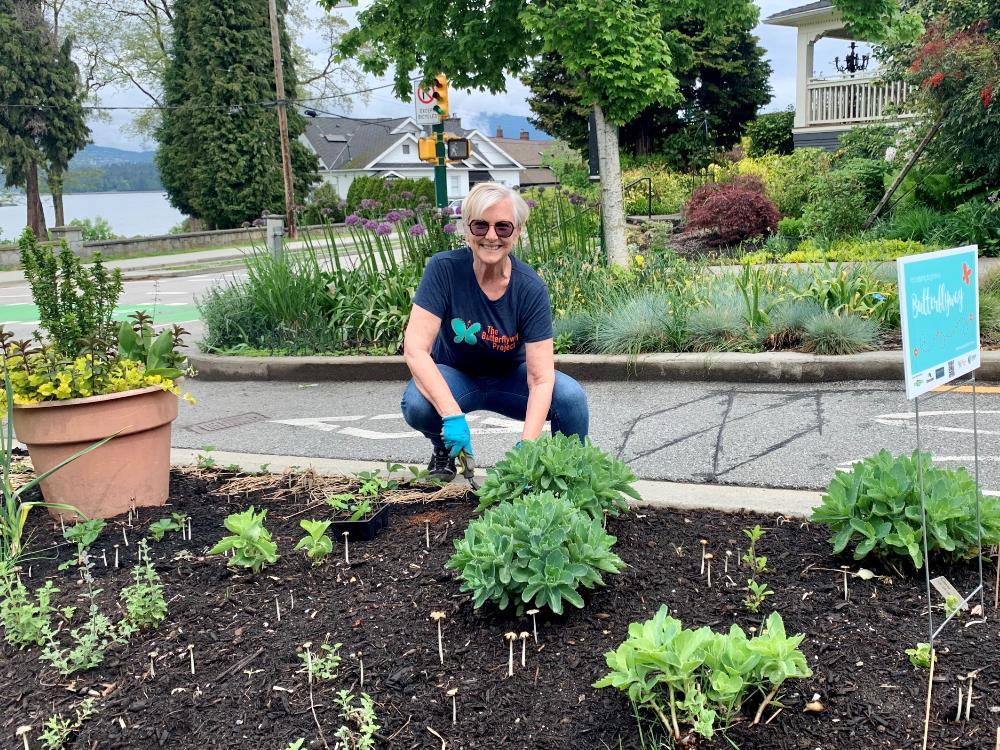
To sustain a lasting cause, the Butterflyway Project started to recruit volunteers called Butterflyway Rangers, committed to learning, connecting with neighbours, schools, community groups and growing pollination highways in their cities.
The pandemic also made the number of gardeners bloom and helped expand the project to more than 400 communities with 1200 rangers throughout the country. This was a perfect opportunity for conservationists like Roberts to present the project.
What better place to get your hands dirty than in your own backyard, have a real connection with the soil and understand the ecological impact of the plants in your lawn? Then monarch butterflies offer an inspiring migration story, to the point that it is the third or fourth generation that will arrive at the destination after a long journey. Monarchs spend the winter in the state of Michoacan in Mexico and from there fly all the way up to Canada through Texas and the Midwestern states.
Bringing nature to our cities
This complicated life cycle is subjected to a bunch of stresses, crossing cities and farmlands where pesticides kill them and their caterpillars. Likewise native milkweeds, an unfortunate name for a vital plant to monarchs for food supply and to reproduce, are increasingly disappearing also due to an obsessive tendency by humans to cut lawns to the ground, use non-native thirsty lawns and grow plants, predominantly for aesthetic reasons.

However, if you mow the grass less frequently and you grow native plants, explains Roberts, it will allow flowers to blossom more naturally with less fertilizer and don’t need excessive watering.
The Butterflyway Project is disrupting the homogenization of Canada’s urban landscape through simple practices as part of a vision for a Homegrown National Park Project by the Suzuki Foundation. They are also calling on Canadians to become Beebnb hosts — like Airbnb hosts for wild bees and other beneficial critters. As the Butterflyway Rangers, Beebnb hosts will pledge to provide essential amenities, such as gardens filled with native wildflowers, plentiful water sources and sunny patches for basking, while choosing not to use harmful chemicals in their yard.
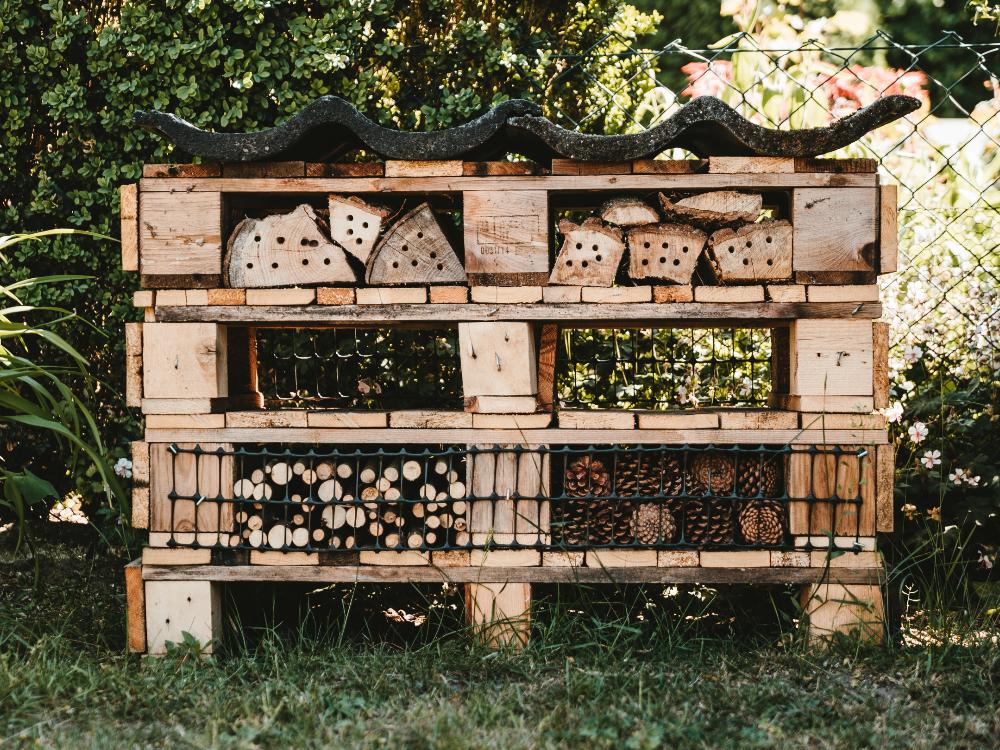
Similarly some European cities like Amsterdam and Oslo have also implemented initiatives to protect endangered bees essential to food production with pollination highways filled with flowers and green roofs. Last year the European Commission issued ‘A guide for pollinator-friendly cities’ with a focus on good practices and recommendations for decision- and policymakers.
Decelerating the disconnection with nature
But the success of the Butterflyway Project has proved that the empowerment of a small group of residents can make a big difference. It has got people actively observing the natural world around us, it has unified neighbours sharing comments and experiences from the west to the east of Canada.
Last week The Economist reported how garden-lover Britons have fallen in love with artificial grass for lawns. This is tragic. For Roberts it is key to connect people with nature for a long lasting effect of man-made pollination highways in cities. Nature really grounds us, it is a human instinct. Regulating what people do in their backyards would be wrong.
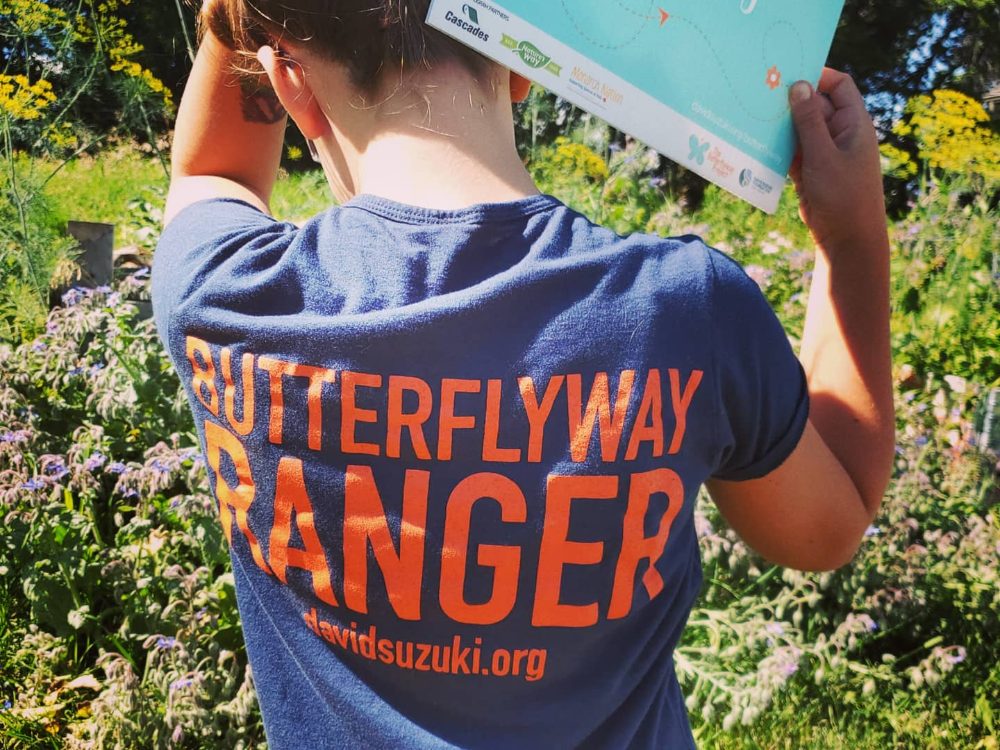
In 2019 the organization Farfalle in ToUr started a collaboration between the city of Turin, the University and a Mental Health Centre in the district of Mirafiori Sud to transform urban areas next to mental health care facilities into ecosystems and habitats for pollinator insects. Mental health patients have been actively engaged in the monitoring of butterflies and bees that visit these new greeneries. Scientists have proved that spending time connected to nature has a restorative impact on people.
Months later after the butterfly encounter at the tennis court Naomi Osaka made headlines again for pulling out of the French Open due to mental health concerns. Maybe a butterfly moment could be good again. It is time to see nature for what it really is, our most valuable green infrastructure to heal us and our cities.
